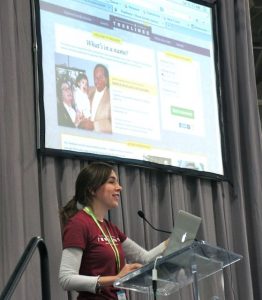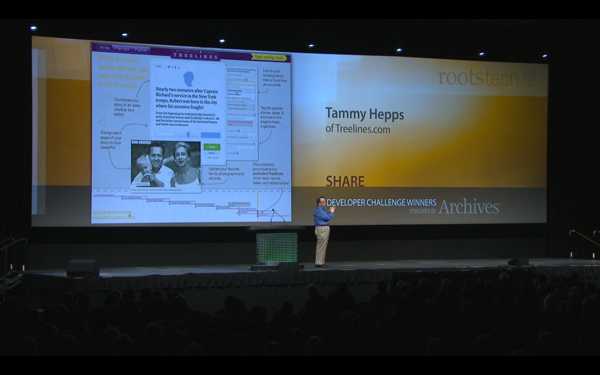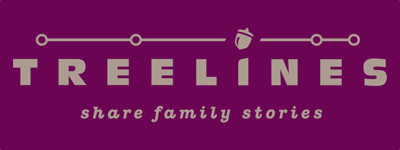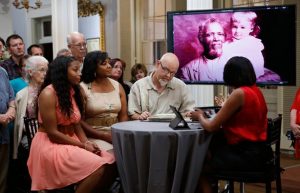I was heartbroken to hear a few weeks ago of the sudden passing of Steve Schecter, the Vice President for Programming at my “home” society, the Jewish Genealogical Society of Greater Philadelphia, just two weeks after he arranged for me to speak at one of the society’s meetings.
I cannot claim to have known Steve well. We probably met for the first time in summer 2011 at the Philadelphia Birds-of-a-Feather gathering at the annual Jewish genealogy conference. I was struck from the start by his friendliness and good cheer, from which I benefited after launching Treelines a couple years later. It turned out that he and I shared an interest in the storytelling side of family history. He created his own methodology called “Sticky Writing,” which, in his words, “takes the principles of Heath & Heath’s book Made To Stick and combines them with learning theory on how to keep people interested.” (How many do you know who create their own writing methodologies?!) He took the time to familiarize himself with Treelines and The Treelines Way and proposed various ways he could help me promote the site. When I agreed to speak, every step of the way he made the arrangements easy as could be, and after I spoke, his reception could not have been kinder. He even generously shared with me some of his work on “Sticky Writing” to benefit my own efforts.
One of the reasons why his death came as such a shock was that I took for granted that my talk would be the first of many opportunities for us to work together. It wasn’t the only way I took him for granted, though.
For as long as I’ve been involved in the organized world of genealogy, I’ve taken all of us for granted. Much of our field runs on the efforts of tireless volunteers, so I’ve stopped noticing the extraordinary contributions of people like Steve, who for no other reason than wanting to spread the fun of family history, devote significant time and energy to blogging, posting helpful links, trading research favors, running societies, indexing records, and even speaking — all for the love of our field and nothing else. Even amongst the crowd of selfless volunteers I’ve met along the way, Steve still stands out in my mind for the sheer breadth of what he was involved with — writing articles for JGSGP’s newletter, organizing a full calendar of events, and teaching all over the Philadelphia area — and surely much more I never saw — at the time of his death he was helping with the forthcoming Mid-Atlantic Family History Conference — but what sticks in my mind is not just what he did, but how he did it. He was unflaggingly enthusiastic, and it shone through everything he did.
I took for granted that of course someone so wonderful should work hard to make my society so great, but of course, in most cases that is not how it works out at all. We can probably all point to volunteer-driven organizations that limp along where we wish they would thrive. I see such groups in my own life — both within and outside of genealogy — and I make excuses why I can’t be the one to help right now, but Steve didn’t. He stepped up. The whole genealogy world is filled with people who step up. It’s stunning, when you think about, how much we accomplish because so many step up for the love of our hobby. Whether mammoth undertakings like indexing the 1940 census or preserving the War of 1812 pensions, or more local efforts like our societies and regional conferences, our field grows not because of the few for-profit companies, but because of the infectious enthusiasm of so many volunteers.
As I contemplate the heartbreaking void Steve leaves behind in the Philadelphia-area genealogy community, I am overwhelmed by the sheer number of such gaps that are plugged just because people like Steve care enough to plug them. Here’s to all of you. You are what makes the genealogy world what it is.
In lieu of flowers, donations can be made in Steve’s memory to Peer Mentor Program: Magee Rehab Hospital, 1513 Race St., Phila., PA 19102 or The Needy Children’s Fund, P.O. Box 87 Gloucester City, NJ 08030.
 Yesterday NGS announced the program for its 2014 Family History Conference, which will be held May 7–10 at the Greater Richmond Convention Center and Marriott Hotel located in downtown Richmond, Virginia. The registration brochure is now available online for you to peruse the full conference schedule, including more than 175 lectures, given by a variety of nationally-known speakers and experts including… the founder of Treelines!
Yesterday NGS announced the program for its 2014 Family History Conference, which will be held May 7–10 at the Greater Richmond Convention Center and Marriott Hotel located in downtown Richmond, Virginia. The registration brochure is now available online for you to peruse the full conference schedule, including more than 175 lectures, given by a variety of nationally-known speakers and experts including… the founder of Treelines! Follow
Follow




